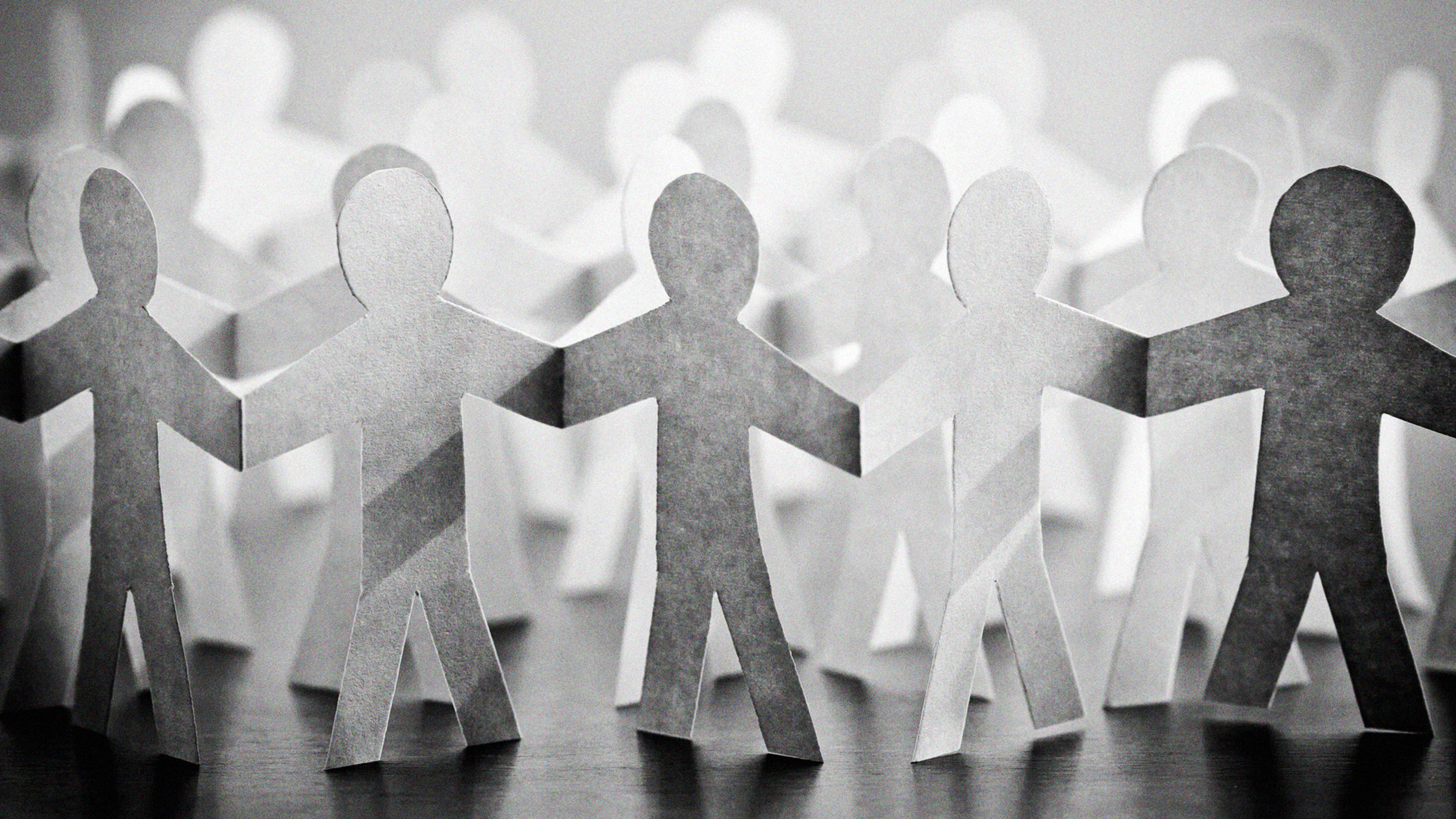A new research paper suggests that when “birds of a feather flock together,” minority groups are disadvantaged due to a reduction in their influence and ability to access novel information. The homophily principle is a widely observed phenomenon in social science where people are more likely to form social connections with others like them based on characteristics like age, race, gender and income. The way you connect to other people within a social network influences your ranking or importance within that network.
Until now, however, it’s been tough to pinpoint the extent to which homophilic behavior and the size of a minority group affected the ranking of minorities within a network. By modeling how connections form in social networks, the new paper’s authors found that higher levels of homophily can greatly disadvantage people from the minority group, making them less visible and influential—to an event greater degree than you might expect.
“Our findings suggest how those minorities can become more isolated and less recognized by the majority,” says the paper’s lead author Fariba Karimi. “In homophilic networks, information also takes much longer to arrive from majority to minority which means that minorities are less likely to hear about novel ideas or good job offers.”
Doing the math
The authors created a social network model with tunable homophily and group sizes. Social tie formation was determined by the level of homophily in the network and preferential attachment. Preferential attachment means that popular nodes in the network—people who already have many social ties—are more likely to form new ones. Homophily in this simple model means that social ties are more likely to be formed between two people who share a single characteristic, such as being male. Ranking in the network is determined by how many social connections a person has.
In each network modeled, the majority of people share a single characteristic. The paper’s authors defined a measure of homophily, or h. If h is between 0.5 and 1, people in the network are more likely to form social ties with others like them. When the value of h reaches 1, people only form ties with people like them.
The authors modeled networks with different levels of homophily and relative group sizes (where the minority accounted for between 5% and 50% of the entire network) and observed how social ties formed. In homophilic networks, majority nodes added social connections faster than minority nodes until h reached roughly 0.8. In contrast, minority nodes formed fewer connections than you would expect given the size of the minority and were therefore less influential. For example, when the minority formed 20% of the population, less than 20% of the top ranked nodes came from the minority. The smaller the minority, the worse this effect became.

The paper’s authors mention a recent Twitter study which found empirical evidence for this effect. Among the Twitter accounts with the highest numbers of followers, white men were overrepresented while women, Asians, and black men were underrepresented relative to their Twitter population size.
The worst-case scenario for a minority seems to occur when homophily is in the mid-range. In this case, minority nodes not only find it difficult to form connections with majority nodes, but also with some nodes from their own group due to fierce competition with the majority. This is reminiscent of the Queen Bee Syndrome, in which some women distance themselves from other women in male-dominated environments.
The authors also looked at how information travels through social networks with different levels of homophily and relative group sizes. In homophilic networks, they found that it is harder for information to disseminate. In networks with high levels of homophily, the arrival time of information from majority to minority and vice versa increases drastically.
Homophily in tech and science
Along with online social networks, the paper explored data from real-life networks which displayed homophily and had a minority population, such as a scientific collaboration and citation networks, and compared them with the results of the model.
While the authors’ network model is relatively simple, the connection behaviour it displays was similar to that observed in the real-life social networks examined in the paper. In a network of scientific collaborations with moderate homophily (h = 0.57) and a female minority of 22%, the minority is underrepresented in the top rankings, but close to its relative size. In contrast, in a scientific citation network which was extremely homophilic, the minority of 37% of the population was highly underrepresented in the top rankings.
The factors which determine who reaches the top rankings in a tech company or a scientific network are complex but social connections certainly play a part, especially in the era of social media, and this model shows how homophily and group size alone (not personality or competence) can disadvantage a minority.
“This is in particular a pressing issue in recent years when ranking algorithms tend to blindly rank individuals based on their social network,” says Karimi.
75 percent of executives at the largest U.S. tech companies are white men. Women form a small minority in tech companies, especially in the higher ranks. Black and Hispanic men and women were rare at entry level, and almost entirely absent from managerial and executive jobs. This paper’s findings could provide a partial explanation for behavior that women and other minorities who work in science and technology have observed anecdotally. I once wrote an article, “The Loneliness of the Female Coder,” about being the lone woman on software development teams. Many of the findings in this paper ring true to me, based on personal experience.
In 2015, researchers who interviewed 60 female scientists and surveyed 557 female scientists found that</a? two-thirds of the women surveyed, and three quarters of black women, reported that their expertise was constantly questioned. 42% of black women surveyed felt that socially engaging with colleagues might further negatively affect perceptions of their competence, while the figure was 38% for Latinas, 37% for Asian-American women and 32% for white women, thereby increasing their social isolation.
At Google, former employees described a culture where white male managers frequently supported and promoted employees who looked like themselves. One black female former Googler said “I was invisible. It was like I didn’t matter. So what was the point of being there?”
How to combat homophily
It is possible to at least estimate the level of homophily within own your company or network and therefore gauge the potential effect on minorities. “If you have access to email communications, for example, one can determine how much homophily is involved,” said Karimi. “This method can be used by management to ensure more equality in the company.”
The authors also suggest several ways to increase the ranking of minorities in homophilic social networks. Both majority and minority groups should strive to create more connections with people who are not similar to them. Being more active socially can also help the minority group to improve its overall visibility and rank. These recommendations run counter to the trend towards women-only networks and events in tech and science. It also requires men in male-dominated industries to make more effort to connect to their female colleagues.
“If you are a woman in the tech industry and you only create friendship links to other women in your field, that can create more isolated groups and enhance more biases,” says Fariba. “We argue that men and women should actively support women if we want to close the gender gap.”
Ranking algorithms can also automatically counter the detrimental effects of homophily by ensuring that the fraction of a minority in the top rankings is the same as the fraction of the minority in the population overall, or better. For example, if 10% of the employees of a tech company are black, the company can design a ranking algorithm that ensures that at least 10% of the senior executives are also black.
Using the model in this paper, it is possible to determine analytically how much compensation is needed in a ranking algorithm to achieve this. If the top 10% of nodes have at least 200 connections, for example, the algorithm can be tweaked to lower the number of connections required of minority nodes to merit promotion and increase the amount of connections required of majority nodes to be promoted. Effectively, this means mathematically determining how to enforce quotas which ensure fair representation in the higher ranks of companies.
If homophily in tech and science can lead to minorities becoming socially isolated and getting less recognition than they deserve, studies like this are a small first step towards reducing the obstacles they face.
Recognize your brand’s excellence by applying to this year’s Brands That Matter Awards before the early-rate deadline, May 3.
